Ravichander Vipperla
Expressive Machine Dubbing Through Phrase-level Cross-lingual Prosody Transfer
Jun 21, 2023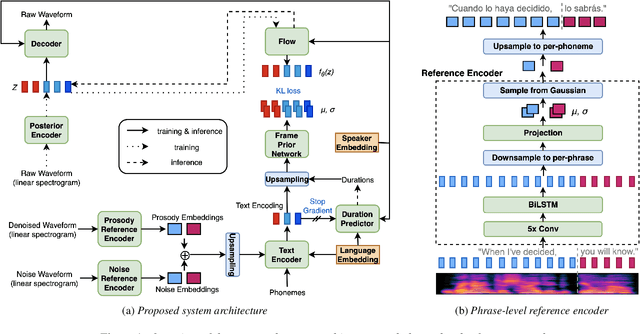


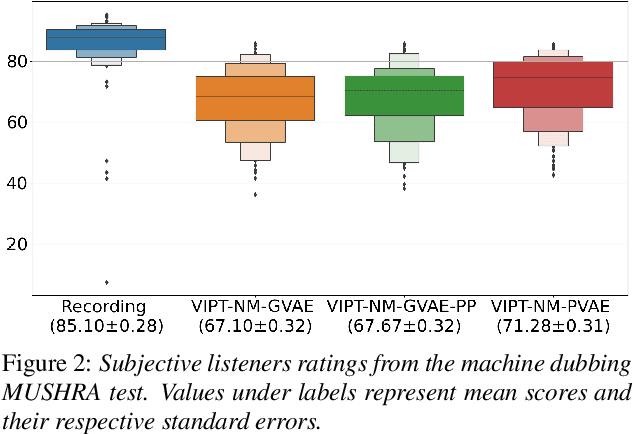
Abstract:Speech generation for machine dubbing adds complexity to conventional Text-To-Speech solutions as the generated output is required to match the expressiveness, emotion and speaking rate of the source content. Capturing and transferring details and variations in prosody is a challenge. We introduce phrase-level cross-lingual prosody transfer for expressive multi-lingual machine dubbing. The proposed phrase-level prosody transfer delivers a significant 6.2% MUSHRA score increase over a baseline with utterance-level global prosody transfer, thereby closing the gap between the baseline and expressive human dubbing by 23.2%, while preserving intelligibility of the synthesised speech.
Cross-lingual Prosody Transfer for Expressive Machine Dubbing
Jun 20, 2023Abstract:Prosody transfer is well-studied in the context of expressive speech synthesis. Cross-lingual prosody transfer, however, is challenging and has been under-explored to date. In this paper, we present a novel solution to learn prosody representations that are transferable across languages and speakers for machine dubbing of expressive multimedia contents. Multimedia contents often contain field recordings. To enable prosody transfer from noisy audios, we introduce a novel noise modelling module that disentangles noise conditioning from prosody conditioning, and thereby gains independent control of noise levels in the synthesised speech. We augment noisy training data with clean data to improve the ability of the model to map the denoised reference audio to clean speech. Our proposed system can generate speech with context-matching prosody and closes the gap between a strong baseline and human expressive dialogs by 11.2%.
CN-Celeb: multi-genre speaker recognition
Dec 23, 2020
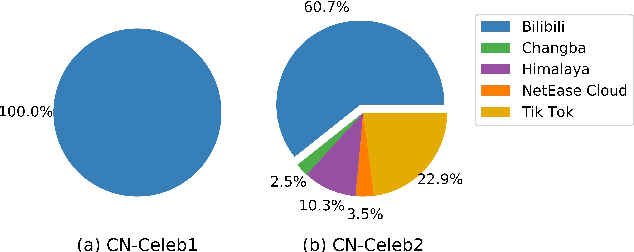
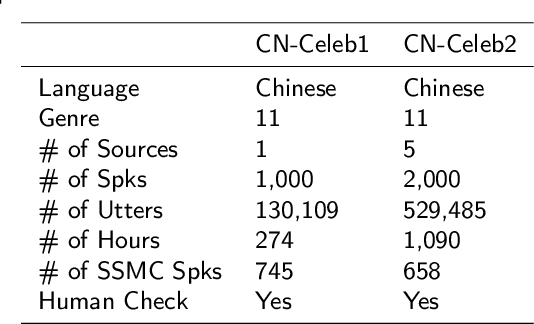
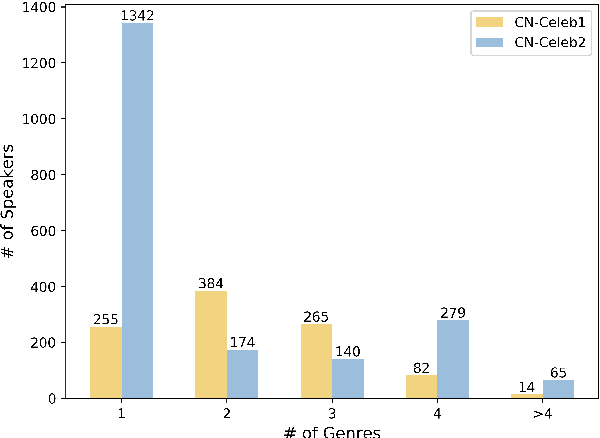
Abstract:Research on speaker recognition is extending to address the vulnerability in the wild conditions, among which genre mismatch is perhaps the most challenging, for instance, enrollment with reading speech while testing with conversational or singing audio. This mismatch leads to complex and composite inter-session variations, both intrinsic (i.e., speaking style, physiological status) and extrinsic (i.e., recording device, background noise). Unfortunately, the few existing multi-genre corpora are not only limited in size but are also recorded under controlled conditions, which cannot support conclusive research on the multi-genre problem. In this work, we firstly publish CN-Celeb, a large-scale multi-genre corpus that includes in-the-wild speech utterances of 3,000 speakers in 11 different genres. Secondly, using this dataset, we conduct a comprehensive study on the multi-genre phenomenon, in particular the impact of the multi-genre challenge on speaker recognition, and on how to utilize the valuable multi-genre data more efficiently.
Bunched LPCNet : Vocoder for Low-cost Neural Text-To-Speech Systems
Aug 11, 2020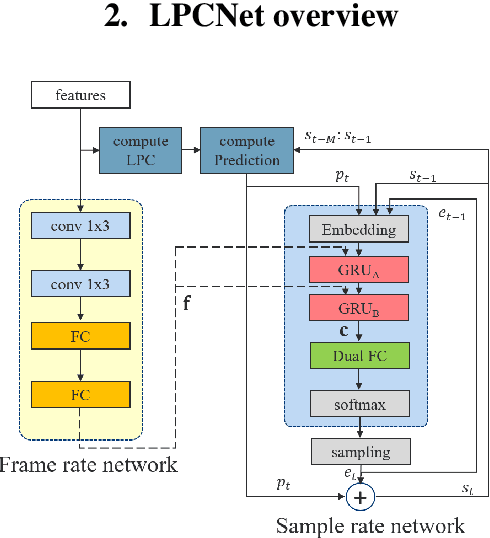
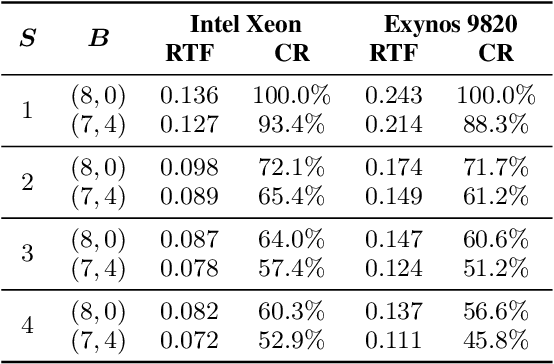
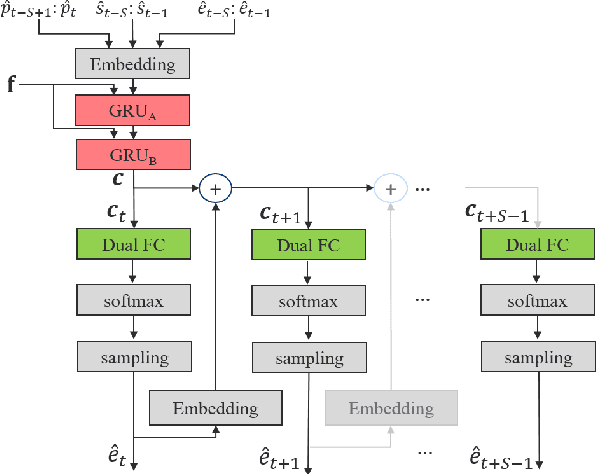
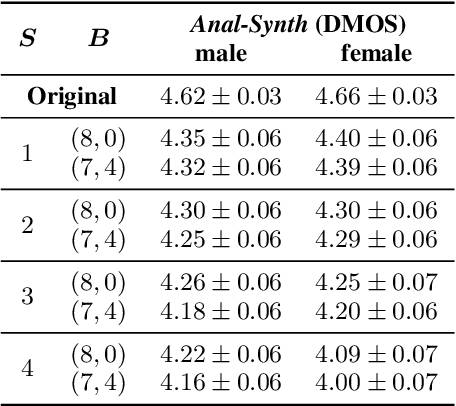
Abstract:LPCNet is an efficient vocoder that combines linear prediction and deep neural network modules to keep the computational complexity low. In this work, we present two techniques to further reduce it's complexity, aiming for a low-cost LPCNet vocoder-based neural Text-to-Speech (TTS) System. These techniques are: 1) Sample-bunching, which allows LPCNet to generate more than one audio sample per inference; and 2) Bit-bunching, which reduces the computations in the final layer of LPCNet. With the proposed bunching techniques, LPCNet, in conjunction with a Deep Convolutional TTS (DCTTS) acoustic model, shows a 2.19x improvement over the baseline run-time when running on a mobile device, with a less than 0.1 decrease in TTS mean opinion score (MOS).
Iterative Compression of End-to-End ASR Model using AutoML
Aug 06, 2020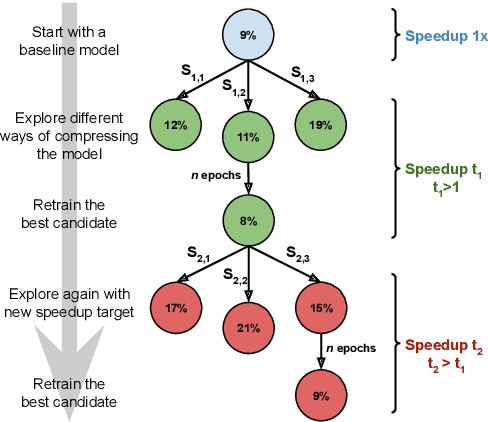
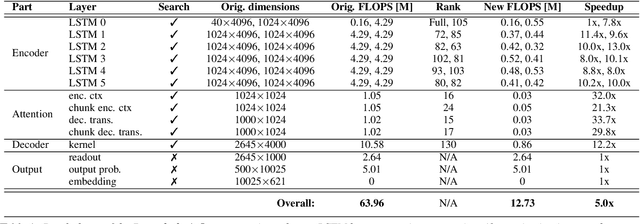
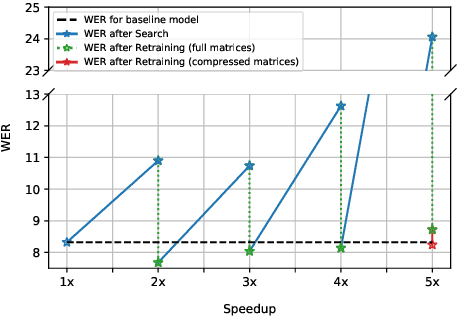
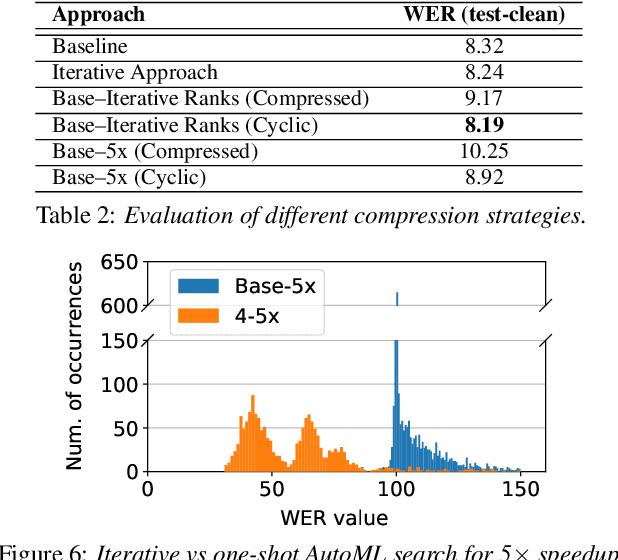
Abstract:Increasing demand for on-device Automatic Speech Recognition (ASR) systems has resulted in renewed interests in developing automatic model compression techniques. Past research have shown that AutoML-based Low Rank Factorization (LRF) technique, when applied to an end-to-end Encoder-Attention-Decoder style ASR model, can achieve a speedup of up to 3.7x, outperforming laborious manual rank-selection approaches. However, we show that current AutoML-based search techniques only work up to a certain compression level, beyond which they fail to produce compressed models with acceptable word error rates (WER). In this work, we propose an iterative AutoML-based LRF approach that achieves over 5x compression without degrading the WER, thereby advancing the state-of-the-art in ASR compression.
ShrinkML: End-to-End ASR Model Compression Using Reinforcement Learning
Jul 08, 2019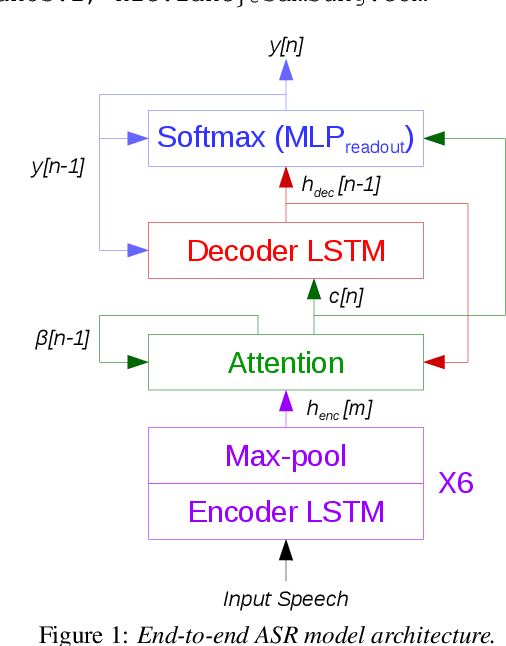
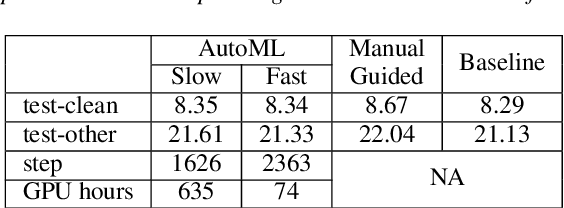
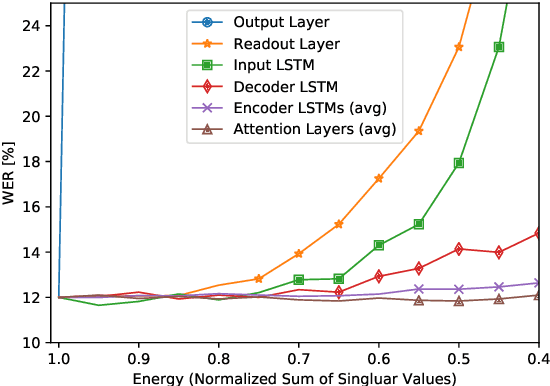
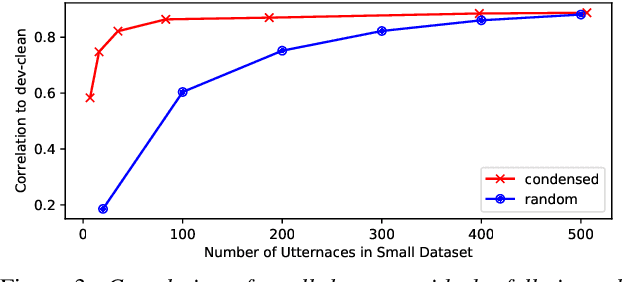
Abstract:End-to-end automatic speech recognition (ASR) models are increasingly large and complex to achieve the best possible accuracy. In this paper, we build an AutoML system that uses reinforcement learning (RL) to optimize the per-layer compression ratios when applied to a state-of-the-art attention based end-to-end ASR model composed of several LSTM layers. We use singular value decomposition (SVD) low-rank matrix factorization as the compression method. For our RL-based AutoML system, we focus on practical considerations such as the choice of the reward/punishment functions, the formation of an effective search space, and the creation of a representative but small data set for quick evaluation between search steps. Finally, we present accuracy results on LibriSpeech of the model compressed by our AutoML system, and we compare it to manually-compressed models. Our results show that in the absence of retraining our RL-based search is an effective and practical method to compress a production-grade ASR system. When retraining is possible, we show that our AutoML system can select better highly-compressed seed models compared to manually hand-crafted rank selection, thus allowing for more compression than previously possible.
 Add to Chrome
Add to Chrome Add to Firefox
Add to Firefox Add to Edge
Add to Edge